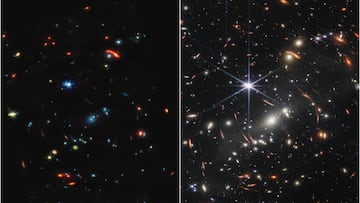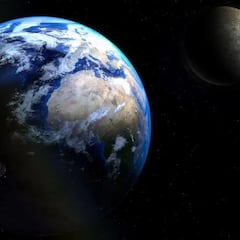James Webb Space Telescope releases new photograph of galaxies in a distant cluster
Classic science from Albert Einstein has enabled the craft to see objects much further than it is usually capable of.


The James Webb telescope has already taken some remarkable pictures in its short lifespan. It has already taken high definition images of the “most primitive galaxy” ever seen and now has taken some more incredible pictures using more than just it’s infrared camera.
James Webb Space Telescope opens Pandora's Cluster in stunning image with help from Einstein (video) https://t.co/Hjn511jMoO pic.twitter.com/c49r6h1ctJ
— SPACE.com (@SPACEdotcom) February 15, 2023
The new images of Pandora’s Cluster show new details as well as an increasing merger towards a “mega cluster” of galaxies. 50,000 sources of infrared light were captured in the huge panorama.
“When the images of Pandora’s Cluster first came in from Webb we were honestly a little star struck,” said astronomer Rachel Bezanson of the University of Pittsburgh in Pennsylvania. “There was so much detail in the foreground cluster and so many distant lensed galaxies, I found myself getting lost in the image.”
The data analysed from the image is due to be published this summer.
How the telescope took the images of Pandora’s Cluster
Related stories
The extreme-depth images are a combination of smart technology and a keen knowledge of physics. To be involved with Space-related programmes most of the time these are a given. The camera itself took exposures up to six hours long for a total time of 30 hours.
But the real trick came from an understanding of ‘gravitational lensing’. In basic terms, the gravitational strength from a closer, but aligned relative to the camera, galaxy warps the shape of the light. This allows objects behind said galaxy to be magnified. This phenomena was first predicted by Albert Einstein back in 1915.

